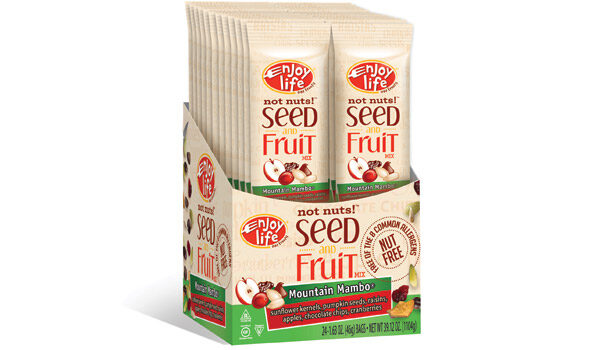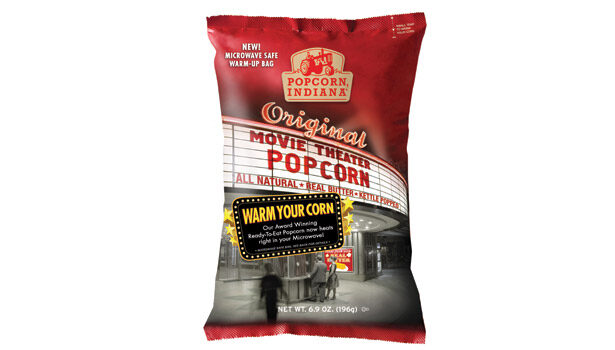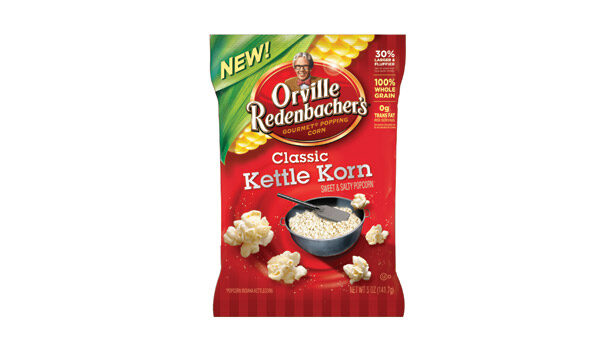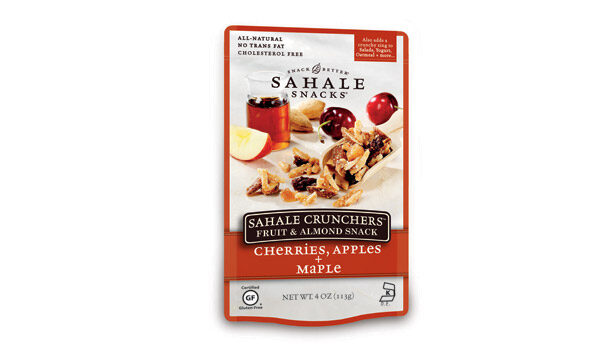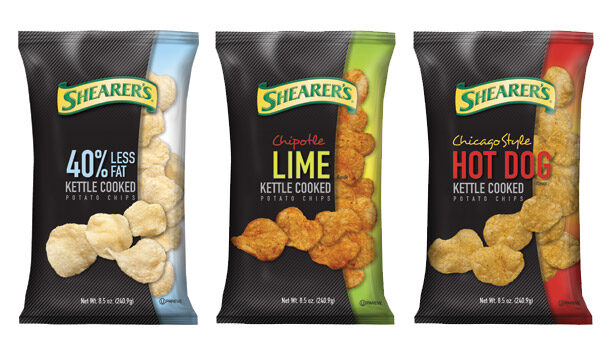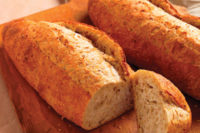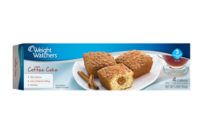Sections in this article:Globalization gainsHealthy athletes |
Snacks are hanging tough despite the foot-dragging economy, as nearly one-quarter of consumers struggle to make ends meet. But snackers are snacking more frequently, and the products they’re eating play a more important role in wellness- and indulgent-related eating occasions.
According to the latest 2012 Harris Poll EquiTrend study issued recently that shows what brands Americans are likely to reach for when they’re hungry, Americans enjoy their salty snacks. Lay’s Potato Chips have been perennially ranked on top among this category for the last eight years. They’re followed by Doritos and Tostitos, which comprise the top three salty snack brands. Others above the category average are Cheez-It, Fritos, Goldfish Crackers, Ruffles and Snyder’s of Hanover pretzels.
In the poll’s new popcorn category, Orville Redenbacher is the Popcorn Brand of the Year. Not only is Orville Redenbacher the most familiar among the seven popcorn brands surveyed, it also received top-ranked scores for quality and purchase consideration. The only other brand to rank above the category average was Pop Secret Popcorn, with purchase consideration second only to Orville Redenbacher.
“Nearly 90% of consumers are trying to eat healthier, and many view snacks as part of their overall dietary plan.”- Sally Lyons Wyatt, executive, client strategy and insights, at SymphonyIRI Group |
Sally Lyons Wyatt, executive, client strategy and insights, at SymphonyIRI Group, Chicago, reported in her State of the Snack Food Industry address at March’s SNAXPO 2012 in Phoenix, that even though consumers are more conservative, they are snacking more today than they were only a few years ago and are looking for “small” indulgences that won’t completely run them off their dietary track. In fact, she says, the number of consumers snacking three or more times daily has increased sharply since 2009, and consumers snack even more as they get older.
Consumers are also looking for something healthier. So snack manufacturers are taking these cues and making their products healthier, more attention-getting and in different portions. “Snack marketers are faced with huge opportunity as the U.S. population ages,” Wyatt says. “But snack marketers need to proceed with caution in this fragile economic environment. Value is critical, so finding the right pricing lever is paramount to driving category growth, capturing share of snack spending, and retaining and building customer loyalty. Yesterday’s strategies are being met with diminishing returns, and a new day is dawning for snack marketers.
“Nearly 90% of consumers are trying to eat healthier, and many view snacks as part of their overall dietary plan,” she says. Wyatt also points out that consumers want options that will give them energy and provide more better-for-you attributes, such as antioxidants and whole grains, and eliminate the negative things including calories and trans-fat. As much as 66% percent of consumers want retailers to clearly identify healthier products in the store.
Today, 70% of consumers are actively looking for the best value when buying snacks, she explains in an e-news report from the Snack Food Association, noting that pricing is a top consideration, with 36% of consumers saying brand decisions are heavily influenced by price.
Globalization gains
A forecast from market analyst Frost & Sullivan says that food suppliers are also looking at globalization and emerging markets including China, India and Brazil for inspiration. “We’re seeing the creation of on-trend spicy and ethnic flavors such as chamoy, rancherito and sweet Thai chili, as well as more healthy and better-for-you options like baked and popped potato crisps,” says Randy Johnson, vice president of sales at KLN Enterprises, Perham, Minn. In May, KLN introduced a new line of baked crisps with exciting flavors and five new air-popped potato crisps, three that are potato-based and two are made with sweet potato.
Jeff Bincyk, vice president of marketing and shopper insights, Shearer’s Foods, Massillon, Ohio, is confident that the outlook for salty snacks is bright. “Despite the economy, the category has grown,” he says. “Consumers of all ages enjoy salty snacks because these products have widespread appeal.”
Shearer’s, which makes Kettle Cooked, Home-Style, Rippled and Wavy potato chips in a variety of flavors, has just developed new packaging for its potato and kettle chips with simpler, minimalist graphic designs. “We see a proliferation of product attributes crowding retail packaging today, to the point where it makes the product less attractive for purchase,” Binczyk says. “Based on this, we decided to move in a different direction.”
“It’s our responsibility to offer consumers better-for-you products. American consumers are looking at snacking as an important part of a healthy lifestyle."- Jeff Roberts, marketing manager at Snak King, City of Industry, Calif. |
He says that where potato chips and kettle chips are concerned, taste is king. “Consumers simply want great-tasting products. If products also have healthier attributes (such as reduced fat), they are additional benefits. However, if the product’s healthier attributes compromise taste, consumers will be less likely to buy them.”
Consumers are also looking for authentic ethnic flavors in their snacks that are extreme and intense, observes Jeff Roberts, marketing manager at Snak King, City of Industry, Calif., which is considered one of the largest snack food manufacturers in the U.S. Snak King makes El Sabroso tortilla chips, which Roberts says are bringing a real flavor punch to the category with a just-released Baja Limon flavor, which joins the existing line of tortilla chips that features flavors such as Salsitas and Guacachips, among others.
The company has been reworking some of its product formulas to reduce the amount of sodium they contain as well as add whole grains, Roberts adds. “Primarily, we are seeing our snacks expand into the breakfast category as more and more consumers are looking for nutritious offerings on the go. The Whole Earth Bite Size Nut Clusters are filling this void.” The Nut Clusters are available in 1.25- and 5-oz. resealable zippered packages and come in a choice of Roasted Almonds or Cashew, Almond and Cranberry Nut Cluster combinations, he says.
Roberts points out that economic issues are also prompting consumers to choose snacks to replace more and more meals. “It’s our responsibility to offer consumers better-for-you products. American consumers are looking at snacking as an important part of a healthy lifestyle. This is far removed from how snacking was perceived in the past as unhealthy, gut-filling, useless junk food. One of our biggest challenges is to deliver great taste while improving the nutritional aspect of the product.”
Snak King views the outlook for snacks as strong, but they’re not going to look like they did in the past. “Snack foods moving forward won’t just have to taste good, they will also be healthy for you and serve a function as well,” he says. “Consumers will be seeking out products with real ingredients they are familiar with or unique, whole ingredients from different parts of the world, not products that have chemical-looking ingredient names developed in a lab. We are developing healthy, several tasty product combinations for new product launches.”
Sweet-and-salty continues to be a driver in the popcorn segment, according to Popcorn Indiana’s CEO Hitesh Hajarnavis. “It’s an excellent savory carrier for sweeter flavors like cinnamon and chocolate,” Hajarnavis says. “One opportunity we have in our category is to further educate the consumer that popcorn is a healthy snacking option and that there are high quality, all-natural popcorn products that taste amazing, so they don’t have to make any compromises.”
Likewise, Paul Albrecht, vice president of Houston-based Simply7 Snacks sees a bright future for snacks. “The outlook for the snack food industry is very good,” he says. “Even in tough economic times, snack foods can be an inexpensive luxury for people to enjoy. As the economy continues to improve, and consumers recognize the benefits of a healthier and cleaner diet, the natural and organic snack category should grow quickly.”
According to SymphonyIRI Group, in the 52 weeks ending April 15, 2012, dollar sales of pork rinds in U.S. supermarkets, drugstores, convenience stores and mass market retail locations, excluding Walmart, totaled almost $261 million, up by nearly 4.5 percent from the prior year. Unit sales were virtually flat, rising just 1.25 during this time period.
Pork rind producers still have to educate consumers about their offerings, which typically contain no trans-fat or carbs. Decreases in disposable income are thought to be one reason sales are somewhat lacking. “In some parts of the country that were a tougher sell, we’re seeing a resurgence of these snacks,” says Mark Singleton, vice president of sales and marketing at Rudolph Foods, Lima, Ohio. “For example, out West is strong, and the biggest growth is in the northeastern states. Convenience stores are driving these sales.”
Along with changing formats such as lower-sodium varieties and unique flavors, there have been innovations in the pork rind category as a whole, such as microwavable products that are sold uncooked. And sustainability has been a focus when it comes to packaging, with some companies developing petroleum-free bags.
Many consumers are reading more labels and taking steps to improve their health, or at least recognize ways to improve it. The survey says that 87% are making an effort to eat more fruits and vegetables, 78% are cutting calories by drinking water, and 76% are avoiding foods higher in solid fats, sugars and salt. Along with better-for-you ingredients, which have been a must on consumers’ lists of several years now, functionality and performance are also driving new developments.
Yet despite marketers’ efforts, consumers are somewhat confused by the nutrition information. The 2012 Food & Health survey from the International Food and Information Council Foundation (IFIC) indicates that more than half of consumers (52%) say that it’s easier to do their taxes than to know what they should and shouldn’t eat to be healthier. Obese Americans (body mass index 30+), older consumers (65-80) and women are most likely to agree that changing information makes it hard to know what to believe.
“They are looking for specific items on the label to improve health, especially whole grains, and consumers often look to additional resources to verify food and health information, but changing guidance is confusing,” says Marianne Smith Edge, senior vice president, nutrition and food safety, for IFIC.
Gluten-free products and nonGenetically Modified Organisms (GMO) are huge drivers for the snack category. “They aren’t just fads,” adds Albrecht. “These are significant concerns that consumers have about their health and the safety of the food they’re eating. We make all of our products with gluten-free and GMO-free ingredients because we want consumers to understand everything they are eating and feel safe while doing it. The snack and chip category are growing quickly with unique products; it is our goal to offer more unique varieties of chips to consumers.”
And there’s plenty of other news to snack on: Kellogg’s purchase of Pringles from Procter & Gamble amounted to a $2.7-billion move that now makes Kellogg the second-largest savory snack company in the world behind PepsiCo’s Frito-Lay. This strengthens Kellogg’s competitive position in global snacks and its platform for growth, says John Byant, Kellogg Co.’s president and CEO. The purchase of this iconic product in more than 80 flavors and market penetration in more than 140 countries almost triples the size of the company’s international snacks business and complements its existing brands such as Cheez-It, Special K Cracker Chips and its Keebler product line.
In fact, the potato chip alone is evolving all the time. Today, chip aisles in stores are loaded with selections featuring a range of flavors, textures and styles to suit so many tastes, from balsamic/sweet onion, ketchup, Cajun herb and garden tomato and basil pairings to sea salted, guacamole, and parmesan and Tuscan herb. A few years ago, chips could be found in only a handful of varieties—plain, rippled, barbecue, cheese-flavored and sour cream and onion. Adventurous consumers would have to hunt the specialty stores to find much more. Bold, hot and spicy flavors have taken on more importance, with smoky, peppery and Asian notes, as have the ways snack manufacturers are using spices to build up the taste in healthier product varieties.
“Now more than ever, heat and spice can play an upfront strategic role to differentiate familiar products or to attract specific consumer segments and demographics,” says Kimberly Egan, CEO of CCD Innovation, a strategic food and beverage product development company based in San Francisco. “There are endless ways for food manufacturers to mix and match flavorful ingredients to enhance the consumer experience and drive powerful innovation.”
And that doesn’t even consider the different textures and cooking methods. Texture is crucial when it comes to the enjoyment of potato chips; they should be crispy and crunchy. And though many snackers like a thin, fragile chip, specialty chip connoisseurs prefer the assortment of extra-crunchy versions now available. Specialty chippers combine thick slices of potatoes, high-quality oils and small-batch cooking methods to create chips with that coveted crunchy texture that stands up to heavy-duty dips.
Healthy athletes
Chips have often been disqualified by the health-conscious, but Americans love them too much to pass them up. So manufacturers are creating healthier alternatives that satisfy the desire to snack, even in bikini-wearing areas. For the weight-conscious, several tasty low-fat, low- and no-salt products are cropping up in tasty varieties or very thin chip cuts.
Snacks, in general, are also going functional, and the efficacy of health benefits claims is important to drive market growth, according to a survey published by Leatherhead Food Research.
“We are aggressively working in research and development to develop more nutritious snacks that also have some functional components,” adds Roberts. “This is where the industry is moving, and we are aiming to be the leader with our The Whole Earth brand (which includes pita chips, multigrain seeded tortilla chips, kettle corn and veggie chips). Moms are going to be happy with this, since these are better-for-you, but at the same time teens and kids are going to be satisfied because they taste great.”
In fact, vegetable chips made from sweet potatoes, taro, yucca, parsnip and others are big tournament winners right now as alternative snacks. “The development of chips made from alternative ingredients, such as beans, rice, etc., is expanding quickly to give consumers a healthier option,” says Simply7’s Albrecht. “We have started listing several of the benefits of our ingredients on the back of our packaging, in addition to our seven core standards that describe the most important benefits of our products.”
Both Terra Chips and Good Health produce chips made from the more exotic vegetables, and hot and spicy as well as citrusy flavor combinations are reaching the championship round. “People want snacks that are really hot,” says Blair Lazar, president of Blair’s Death Rain chips, Highlands, N.J., which makes habanero chili-spiked chips that all have a heat scale rating.
“Consumers are looking for artisan and gourmet kettle chips, unique flavors and more nutritious products, all of which we can offer,” says KLN’s Johnson. “The biggest opportunities for growth include continuing to meet consumer’s needs through innovation and creation of value-added products. The outlook is positive for snacks.”
